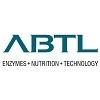Check out what is new in Poultry Industry
Find the best technical articles, forums, and videos on Poultry Industry at Engormix. Enter now and interact with the world's largest agricultural social network.
Evonik recently hosted THE SCIENCING EVENT, bringing together more than 100 valued customers and industry experts during the highly anticipated VIV Asia 2025 in Bangkok, Thailand. The event served as a dynamic platform for sharing cutting-edge scientific insights and exploring the latest innovations that are shaping the industry.
...
Comments : 0
Recommendations: 3
We would like to invite you to explore a company manufacturing Amino Acids & Amino Acids based products for acquisition in India.
About the Company: Established in 1980 and is one of the largest manufacturer and exporters of Amino Acids & Amino Acids based products for use in the field of Nutraceuticals, Agriculture, Veterinary, Poultry & Aquaculture. Located around 35 KM from a...
Comments : 0
Recommendations: 0
Recommended events
May 7, 2025
Canada - Ontario - Niagara Falls
.jpg&w=3840&q=75)
Natasha Hall, Senior Project Manager at VNU, shares key insights and highlights from VIV Asia 2025, showcasing the latest innovations and trends in the global animal husbandry and feed industries.
...
Comments : 0
Recommendations: 0
.jpg&w=3840&q=75)
Maria Fernandez Cuadrado (University of Arkansas) speaks about her research Impact of heat stress on hepatic lipogenesis in broilers: a comparison of low- and high-water efficient lines, presented at the IPSF 2025...
Comments : 0
Recommendations: 0
Featured users in Poultry Industry

Nelson Ward
dsm-Firmenich
Manager, New Business Development at DSM Nutritional Products Inc.
United States
United States
.jpg&w=3840&q=75)
Dr. Keith Bramwell, Director of Global Hatchery Consultants at Jamesway, shares his expertise on the science behind incubation and the importance of precision in creating the ideal environment for embryos to thrive. With over 25 years in poultry science, Dr. Bramwell explains how Jamesway’s innovative technology mimics nature, offering a highly efficient and user-friendly incubation process that results in better quality chicks and improved farm performance....
Comments : 0
Recommendations: 0
Date: Thursday, April 10, 2025, at 12:00 PM CST / 1:00 PM EST
About this Webinar (Free for PSA Members!)
Explore the diverse career opportunities available to those with a...
Comments : 0
Recommendations: 0
.jpg&w=3840&q=75)
Daniel Valbuena, Global Technical Service Manager Hy-Line International, highlights Hy-Line commitment to advancing technology, innovation, and sustainable practices in India’s poultry sector.
...
Comments : 0
Recommendations: 0
.jpg&w=3840&q=75)
Prof. Chung-Feng Chiang (University of Science and Technology, Taiwan) highlights the serious challenge of mycotoxin contamination in imported animal feed ingredients, which negatively impacts livestock growth, immune function, and reproduction. ...
Comments : 0
Recommendations: 0
.jpg&w=3840&q=75)

Influence of low protein diets on performance and intestinal health
Suggested link
Avian Influenza (AI), commonly known as bird flu, is a highly contagious viral disease affecting poultry and other birds. It poses a serious threat to the poultry industries, causing significant economic losses due to high mortality rates, trade restrictions, and culling measures. The disease is particularly...
Comments : 0
Recommendations: 1
Featured comment:
Kronos -Agro private company
Dear Piotr, thank you very much for your point of view. It helps me use enzymes correctly, depending on the available substrates contained in the feed. I think that attention should also be paid to the methods of feed enzymes application, which have historically been used in different countries, this is 1) "over the top" of complete feed (for maximum absorption of nutrients) and also 2) "down specification" to reduce the cost of feed. The risk factor from using of the matrix values in the...
Comments : 89
Recommendations: 31
.jpg&w=3840&q=75)
VNU Europe, organizer of VIV Worldwide, announces the launch of VIV Select India. Hear what Mr. O.P. Singh has to say about it...
Comments : 0
Recommendations: 2
.jpg&w=3840&q=75)
Ricky Thaper (Poultry Federation of India) explains how increases in feed costs and restrictions on imported GM-modified soybean meal and corn affect India's poultry industry in this Engormix interview during IPPE 2025 in Atlanta, USA....
Comments : 1
Recommendations: 1
.jpg&w=3840&q=75)
Ricky Thaper (Poultry Federation of India) comments on India's poultry industry growth data and processing needs in this Engormix interview during IPPE 2025 in Atlanta, USA.
...
Comments : 0
Recommendations: 1
Featured comment:
@Mohamed Fakhoury It is not difficult to analyse the substrate.Every time we can not analyse it as it is time consuming and expensive.We have to consider the average values of feed ingredients in perticular geographical areas. Plus we have to analyse the activity of enzymes based on the method of analysis as recommended by enzyme suppliers.Which is not again easy task....
Comments : 89
Recommendations: 31
Broiler Industry The broiler industry is a crucial pillar of India’s agricultural economy, ensuring food security, employment, and rural development. However, ethical concerns surrounding animal welfare, feed sourcing, worker rights, environmental sustainability, and consumer transparency continue to challenge the industry. As the sector grows, addressing these ethical issues is critical for long-term sustainability and global competitiveness. Current Ethical Challenges...
Comments : 0
Recommendations: 0
Featured comment:
Substrate Analysis: Verifying Substrate Levels in Diets Before Applying Enzymes Enzyme supplementation in animal feed is a highly effective tool for improving nutrient utilization, especially when it comes to breaking down complex compounds in raw materials like grains, oilseeds, and fibrous plant materials. However, for enzymes to be truly effective, their application must be based on a solid understanding of the substrate they are targeting. Substrate analysis, which involves...
Comments : 89
Recommendations: 31
.jpg&w=3840&q=75)
Al Zimmerman, CEO of Axitan, discusses how their groundbreaking endolysin technology is transforming antibiotic-free production. He shares insights on productivity gains, cost savings, and the company's exciting plans for 2025, including new partnerships and product expansions....
Comments : 3
Recommendations: 3
INTRODUCTION The ability to maintain an affordable, safe, and sustainable food supply is a global challenge. Meat consumption trends are changing, with increasing preferences for cheaper and processed white meat and a decline in cereals share of the total food (Sefeedpari et al., 2013; Faridi et al., 2011). The consequent increases in poultry meat production by a factor of seven (3206%) and eggs by a factor of three have overburdened sustainable production (Sousa et al., 2005)....
Comments : 0
Recommendations: 0
.jpg&w=3840&q=75)
Ricardo Rauber (Vetinova) explains how he considers contamination and prevalence to assess risk and make decisions regarding mycotoxin management, in this Engormix interview during IPPE 2025 in Atlanta, USA.
...
Comments : 0
Recommendations: 0









.jpg&w=3840&q=75)










.jpg&w=3840&q=75)




.jpg&w=3840&q=75)

.jpg&w=3840&q=75)
